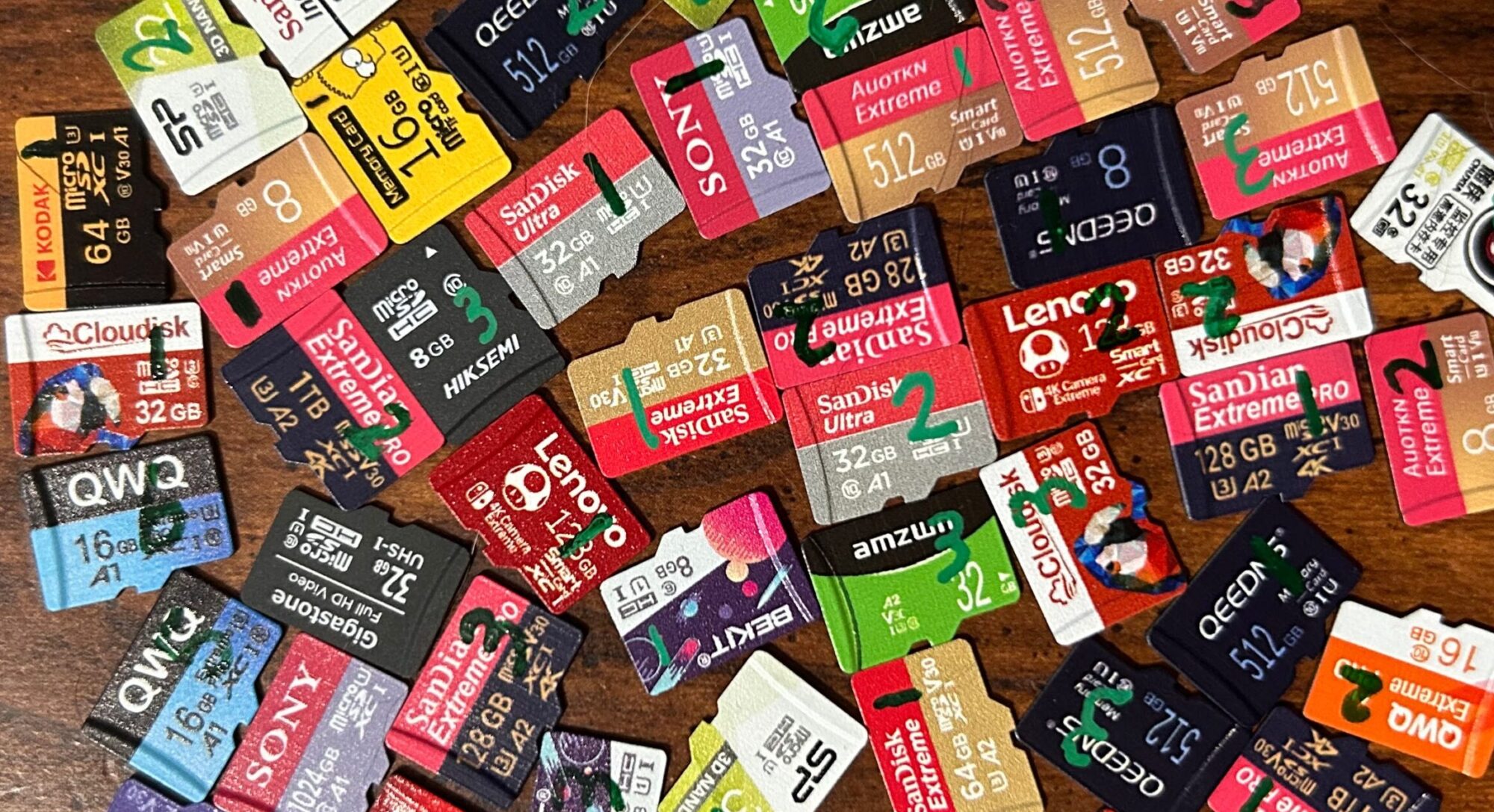Silicon Power is a name that I wasn’t very familiar with going into this project. However, they meet all of the criteria that I set out for determining what I consider to be a name-brand card, so I’ve decided to lump them in with the other name-brand cards.
I purchased these after the disappointing endurance test results on the SP Elites — I wanted to see if the issue was more to do with 3D NAND in general, or if it was more to do with SP as a brand — so I picked up some (what turned out to be) SP Superior’s and SP Superior Pro’s.
In terms of performance, this card does perform better than the SP Elite — about 40% better in sequential write speeds and about 80% better in random read speeds. This makes it good, but not great — its random read speeds put it at about the 68th percentile (as of the time of this writing). Its overall performance, however, was only about average.
These cards carry the U3, V30, and A2 marks. Two of the three samples scored just barely above the threshold required for the U3 and V30 marks; however, the average of all three wasn’t high enough to qualify for either one. On top of that, none of the three cards scored high enough to qualify for the A2 mark. I’ll throw in my standard disclaimer here: my performance testing methods don’t align with those prescribed by the SD specification; it’s possible that these cards would have qualified had they been tested under proper conditions.
On the endurance testing front:
- Sample #1 was doing just fine until it got to round 2,031, when it began experiencing a couple of I/O errors. After just the second reset attempt, it stopped responding to commands altogether.
- Sample #2 was also doing just fine until it got to round 2,192, when it suddenly stopped responding to commands altogether.
- Sample #3 was doing just fine until it got to round 1,767, when it disconnected itself from the reader. I manually ejected and reinserted the card into the reader, which temporarily solved the issue — but it disconnected itself soon afterwards. This process repeated several times, but ultimately I reinserted it into the reader and it refused to respond to commands.
Overall? While these cards were a good deal — coming in at just $0.088 per gigabyte — they did lackluster in all other areas. Endurance was especially poor: the best of the three samples only made it to 2,192 read/write cycles. The average card — as of the time of this writing — did about 4 times better than this. And this result doesn’t seem to be a fluke — the other SP cards I’ve tested did just as poorly (if not worse). So…I think my recommendation is “don’t buy these”.
October 8, 2025
